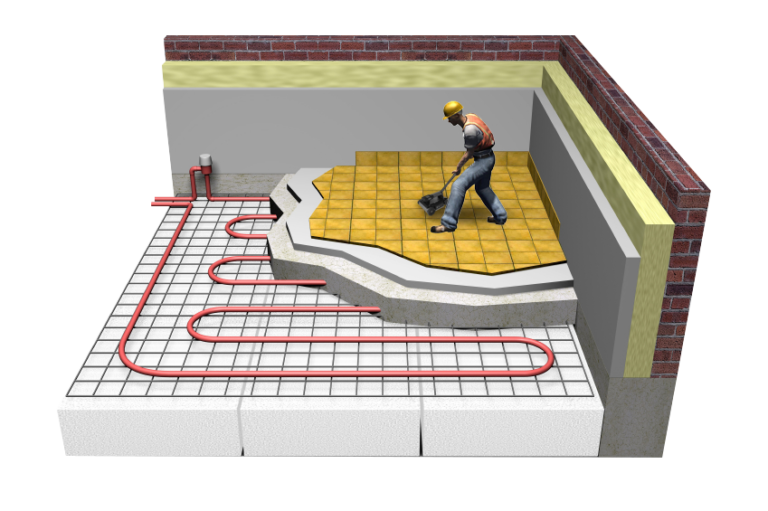Exploring the Secret Benefits of Concrete Scanning in Building Projects
In the realm of modern building and construction methods, the use of concrete scanning modern technology has arised as a pivotal tool for guaranteeing job effectiveness and structural integrity. From enhancing precaution to accurately detecting energies hidden below the surface, the benefits of concrete scanning are complex. The ability to enhance task timelines and reduce costs while maintaining existing frameworks is a testament to the worth this modern technology brings to the construction sector. As we look into the nuanced benefits of concrete scanning, it comes to be apparent that its impact prolongs much past surface-level evaluations, offering a glance right into the elaborate internet of advantages waiting to be discovered.
Boosted Safety Measures
Utilizing sophisticated concrete scanning innovation boosts safety procedures on building and construction websites by giving accurate discovery of potential hazards concealed underneath the surface. This modern technology enables building and construction groups to determine rebar, channels, post-tension cords, and various other obstructions prior to excavation or drilling, considerably minimizing the danger of mishaps. By determining these components exactly, employees can stay clear of damaging critical architectural parts, thus stopping injuries, delays, and expensive repairs.
Furthermore, concrete scanning plays a vital function in making sure the integrity of existing structures throughout renovations or developments. By discovering weaknesses, gaps, or degeneration within concrete elements, designers can address these issues proactively, boosting the overall safety and security and longevity of the structure. This aggressive method not just reduces the threat of structural failures however likewise minimizes the capacity for crashes brought on by unexpected structural deficiencies.
In significance, the implementation of concrete scanning modern technology acts as a proactive precaution that safeguards both building workers and the architectural honesty of structures, eventually adding to the general success and performance of construction tasks. - RainierGPR Concrete Scanning
Accurate Discovery of Energies
Concrete scanning technology assists in accurate identification of below ground energies, improving building and construction website safety and effectiveness. Precise detection of utilities is crucial in building projects to avoid costly problems, project delays, and most notably, ensure the security of workers and the public. By utilizing innovative scanning innovations such as ground-penetrating radar (GPR) and electro-magnetic induction, construction teams can draw up the place of hidden pipes, cords, and other utilities with high levels of accuracy.

Time and Price Performance

Concrete scanning innovation allows construction teams to precisely locate rebar, post-tension wires, and various other ingrained objects within concrete frameworks. This precise info assists in avoiding pricey errors such as accidental damage to crucial components throughout drilling, reducing, or coring tasks. Additionally, by determining prospective threats ahead of time, the demand for pricey repair services or remodel due to problems can be reduced, leading to cost savings for the task.
Additionally, the ability to quickly and precisely spot energies below the surface without causing any type of damages not just saves time yet also protects against pricey disturbances to existing infrastructure. On the whole, the moment and price effectiveness advantages of concrete scanning make it a very useful device for enhancing construction task monitoring and implementation.
Preservation of Structural Honesty
Protecting the structural honesty of structures and infrastructure is critical in guaranteeing long-term stability and security. Concrete scanning plays a critical role in this conservation procedure by permitting construction professionals to determine possible dangers to the structural integrity of a building or facilities prior to they escalate into significant concerns. With making use of sophisticated scanning technologies such as ground-penetrating radar (GPR) and electromagnetic induction, construction teams can non-invasively examine the condition of concrete structures, locate rebar, post-tension wires, and other ingrained aspects, and recognize any gaps, fractures, or degeneration within the concrete.
Improved Project Preparation
In order to ensure the successful execution of building and construction projects, precise interest his response to detail and detailed planning are necessary parts that stem from a thorough understanding of the architectural problems recognized with concrete scanning. Ultimately, incorporating concrete scanning into the task preparation phase boosts sychronisation among team participants, fosters proactive analytical, and contributes to the successful distribution of building projects within budget plan and schedule restraints.
Conclusion
To conclude, concrete scanning provides many benefits in building and construction jobs. By boosting safety and security measures, properly detecting energies, enhancing time and price effectiveness, preserving structural integrity, and assisting in job preparation, concrete scanning proves to be a necessary device for effective project implementation. Its capacity to alleviate threats, increase effectiveness, and make certain job honesty makes it an important possession for construction experts.
In the realm of modern-day construction techniques, the application of concrete scanning technology has actually emerged as a pivotal tool for ensuring job efficiency and structural honesty.Concrete scanning modern technology enables building and construction teams to accurately situate rebar, post-tension wires, and various other embedded objects within concrete structures. Through the usage of sophisticated scanning innovations such as ground-penetrating radar (GPR) and electromagnetic induction, building and construction groups can non-invasively assess the condition of concrete structures, find rebar, post-tension cables, and various other embedded components, and determine any type of spaces, cracks, or damage within the concrete.
In order to ensure the successful execution of construction tasks, precise focus to detail and extensive planning are necessary elements that stem from a comprehensive understanding of the architectural conditions recognized through concrete scanning. Inevitably, integrating concrete scanning right into the task planning phase boosts coordination amongst team members, fosters proactive analytical, and contributes to the successful delivery of construction tasks within budget and timetable restraints.